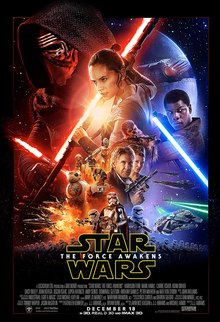
Illustration: Steampunk Frog by Kyle Dunbar. Kyle now has his own tattoo business in scenic Cave Creek, AZ, be sure to check it out!
Note: WordPress won’t let me put a link in the caption, so see Kyle’s Instagram Page here.
For those of you who are wondering, what the heck is steampunk, there are plenty of definitions but I’ll give you mine. Steampunk is a sub-genre of science fiction set in the past, generally in the period of the late 1800’s we call the Victorian Era. England was at that time the world’s ruling power, and its monarch, Queen Victoria, reigned from 1837-1901. Personally, I would include the reign of her son Edward VII, extending the period to 1910. In America, it was known as the Gilded Age, the time of industrialization and progress when steam power ruled the world.
In one sense, steampunk is historical fiction, but it’s more correctly a form of alternate history, which is why we add the “punk” suffix. According to Wikipedia, sci-fi writer K.W. Jeter coined the term to classify his works. The term was a pun on the term “cyberpunk,” a popular sci-fi subgenre of the 1980’s, which was in turn associated with the “cypherpunk” political movement of computer hackers. In the beginning, “punk” signified the anarchy and decadence of the musical style by that name. Eventually, it was broadened to include any genre in which history is skewed or twisted, giving rise to “dieselpunk” fiction set in the period from around World War I to the 1950’s.
What makes steampunk so popular? I believe it’s because the Gilded Age was a time of great optimism about humanity’s future and the advancement of technology. This is when writers like Jules Verne and HG Wells invented modern science fiction – though admittedly not all their works were optimistic. In our uncertain and decadent times, this era seems inviting, even refreshing. Courtesy was an essential character trait, and honesty and hard work were widely admired. The positive outlook of that time provides a welcome contrast to today’s bleak economic and political outlook. The class distinctions and rigidity of Victorian society, which would be stifling to our modern sensibilities, can seem reassuring when viewed from a distance.
One thing that has surprised me about the steampunk movement is its longevity. At first, it seemed it might be a transitory fad, more about the fun of wearing “high tech” period costumes to conventions than the stories themselves. Perhaps costuming and art are indeed steampunk’s more popular aspects and we have a lot of that in our house, but the literary movement is going strong as well. This is one of the reasons I’ve been writing in this genre- its current popularity, combined with my own fascination with history and technology.
My first exposure to steampunk fiction was the novel The Difference Engine by Willliam Gibson and Bruce Sterling. This alternative history about the rise of mechanical computers in the 1850’s helped establish some of the archetypes of the genre. Alternate history, including the steam era, were frequent themes in science fiction (such as Michael Moorcock’s Warlord of the Air) but only recently did it earn its own category. Since then we’ve seen talented young writers such as Cherie Priest (Boneshaker) and Scott Westerfield (Leviathan) emerge to further develop this trend.
Some of its devotees say that the steampunk genre is much older, going back to the 1960’s sci-fi TV western called The Wild Wild West. It’s set in the 1870’s, when Secret Service agents James T. West and Artemus Gordon have their own train car HQ and lots of proto-James-Bond gadgets. It was one of my favorite shows as a kid, which unfortunately gives away my age.
Though I’ve always been fascinated by history and period novels, alternate history, such as the works of Harry Turtledove (Guns of the South) are even more fun. This kind of writing provided the inspirations for my second novel Fidelio’s Automata. In this book Nikola Tesla did not leave Colorado in 1900, staying to play a part in the Colorado Labor Wars, which pitted radical miners against the companies. I set another part of the story in my home state of North Dakota, involving the real-life characters the Marquis de Mores, an eccentric French nobleman, and his liberated American wife, Medora. In real life, the Marquis’ meat-packing business failed, he returned to France, got involved in extremist politics, and died violently in North Africa. In Fidelio, his business did not fail, and he stayed in America and lived to see the twentieth century.
My latest foray into steampunk is the novella Miss Ione D. and the Mayan Marvel, a collaboration with my writing partner Arlys Holloway. She invented Ione D as a Facebook persona to promote Fidelio’s Automata. I found the character so intriguing that I decided we had to create stories for her. We began with Professor Ione D and the Epicurean Incident, but decided instead to start with Ione D in her younger days, exploring the pyramids in Tikal, Guatemala. (Don’t worry; Epicurean Incident is next!) Ione is the daughter of an American diplomat and a French actress and grew up in the US embassies in Paris and London. She’s a brilliant young woman who travels the world looking for adventure and exciting new recipes, while solving mysteries in the process. Mayan Marvel is a short work and as such it is (in our humble opinion) a good introduction to the steampunk genre. Check it out on Amazon; it’s currently free to Kindle Unlimited members.









